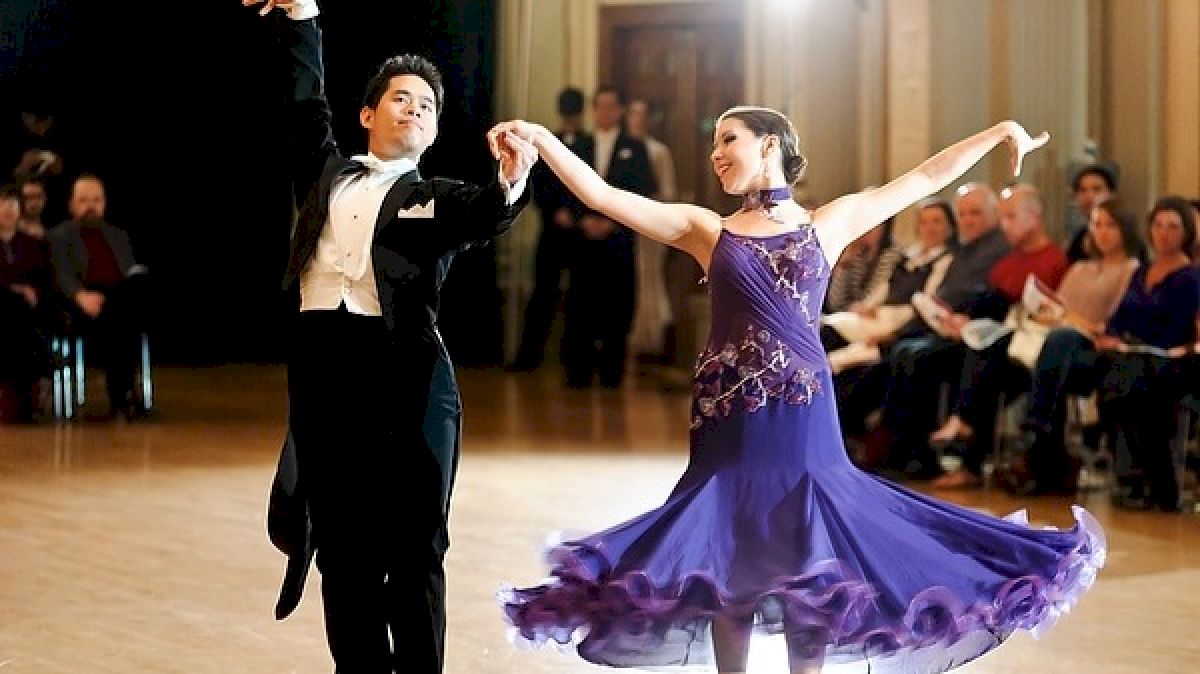The 8 Ballroom Dance Styles
The 8 Ballroom Dance Styles
The ballroom dance styles that are recognized by competitions can vary depending on each event's specifications and its location. Check out our full list of standard ballroom dances.

The ballroom dance styles that are recognized by competitions can vary depending on each event's specifications and its location. According to the World Dance Council (WDC) and the World DanceSport Federation (WDSF), the two major governing bodies on competitive ballroom dance, the recognized standard dances are the waltz, foxtrot, tango, quickstep, and the Viennese waltz. The dances recognized in the Latin category include the samba, cha-cha-cha, rumba, paso doble, and the jive.
A few additional dances are accepted and commonly competed at American- and Canadian-based competitions. These dance include East Coast swing, bolero, and mambo. Check out the full list of standard ballroom dances below.
This is a closed-position dance in which couples glide across the floor in an effortless romantic manner. This dance was created in the streets of Vienna, Austria, and is sometimes referred to as the slow waltz.
A dance created to complement the rag-time music of the early 1900s, the foxtrot is still an immensely popular dance today. It's characterized by romantic, flowing movements.
The tango is a dramatic dance of passion. Sometimes theatrical in presentation, this dance is defined by sharp staccato motions as well as sensual, feline-like walking and gliding.
A forerunner to what is known today as swing dancing, this upbeat dance is defined by syncopated powerful movements. It was born out of 1920s New York and first made popular by African and Caribbean dancers.
The oldest ballroom dance practiced today, the Viennese waltz differs from the waltz mainly in speed. This dance consists of many turns that glide around the dance floor and is considerably more difficult due to its speed.
The East Coast swing is an energetic dance involving lots of turns and twists. It originated in New York in the 1940s, evolving from the Lindy hop.
Competed primarily only in American rhythm ballroom, this dance was birthed in Cuba and is similar to the rumba. In fact, evidence suggest that rumba is a misnomer for the bolero and that the two are actually the same. It is a slow yet strong and expressive dance.
This dance originated in Cuba during the 1940s. Perez Prado is credited as having created the dance, although modern mambo is starkly different from the da that was created by Prado. Mambo is less structured than other disciplines in the genre and heavily emphasizes feeling the music.
A few additional dances are accepted and commonly competed at American- and Canadian-based competitions. These dance include East Coast swing, bolero, and mambo. Check out the full list of standard ballroom dances below.
1) Waltz
This is a closed-position dance in which couples glide across the floor in an effortless romantic manner. This dance was created in the streets of Vienna, Austria, and is sometimes referred to as the slow waltz.
2) Foxtrot
A dance created to complement the rag-time music of the early 1900s, the foxtrot is still an immensely popular dance today. It's characterized by romantic, flowing movements.
3) Tango
The tango is a dramatic dance of passion. Sometimes theatrical in presentation, this dance is defined by sharp staccato motions as well as sensual, feline-like walking and gliding.
4) Quickstep
A forerunner to what is known today as swing dancing, this upbeat dance is defined by syncopated powerful movements. It was born out of 1920s New York and first made popular by African and Caribbean dancers.
5) Viennese Waltz
The oldest ballroom dance practiced today, the Viennese waltz differs from the waltz mainly in speed. This dance consists of many turns that glide around the dance floor and is considerably more difficult due to its speed.
6) East Coast Swing
The East Coast swing is an energetic dance involving lots of turns and twists. It originated in New York in the 1940s, evolving from the Lindy hop.
7) Bolero
Competed primarily only in American rhythm ballroom, this dance was birthed in Cuba and is similar to the rumba. In fact, evidence suggest that rumba is a misnomer for the bolero and that the two are actually the same. It is a slow yet strong and expressive dance.
8) Mambo
This dance originated in Cuba during the 1940s. Perez Prado is credited as having created the dance, although modern mambo is starkly different from the da that was created by Prado. Mambo is less structured than other disciplines in the genre and heavily emphasizes feeling the music.